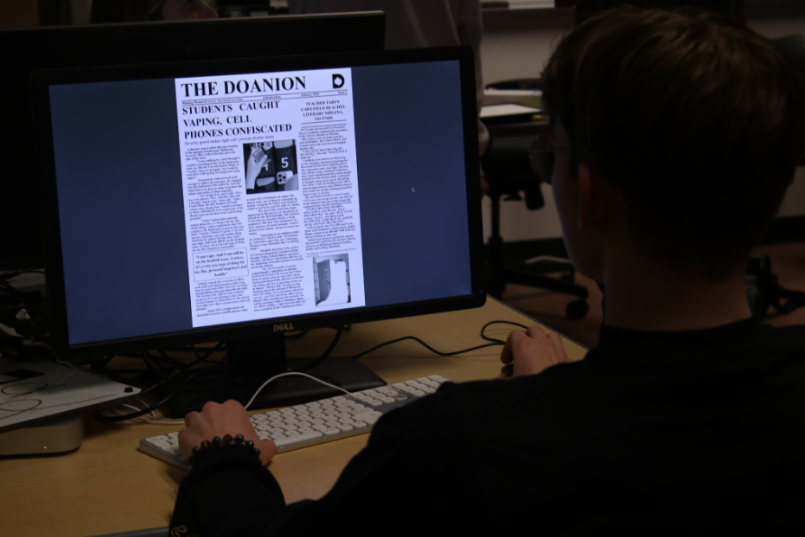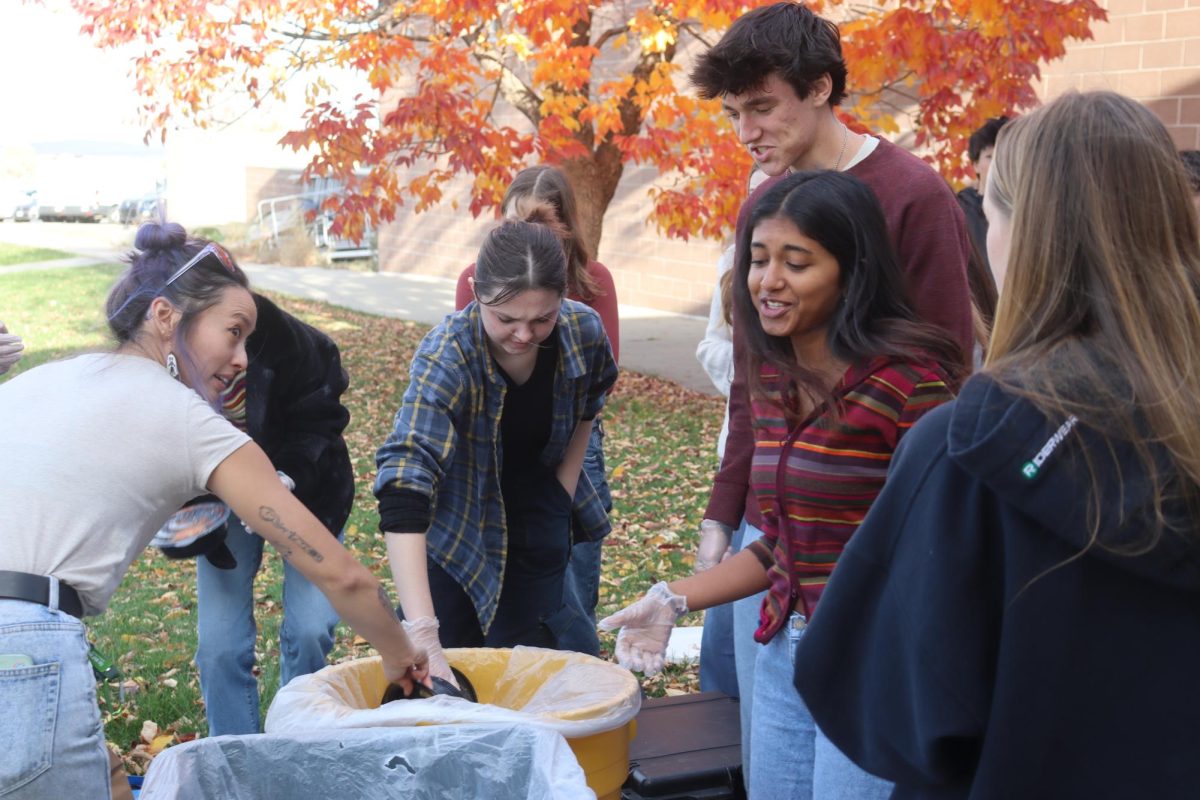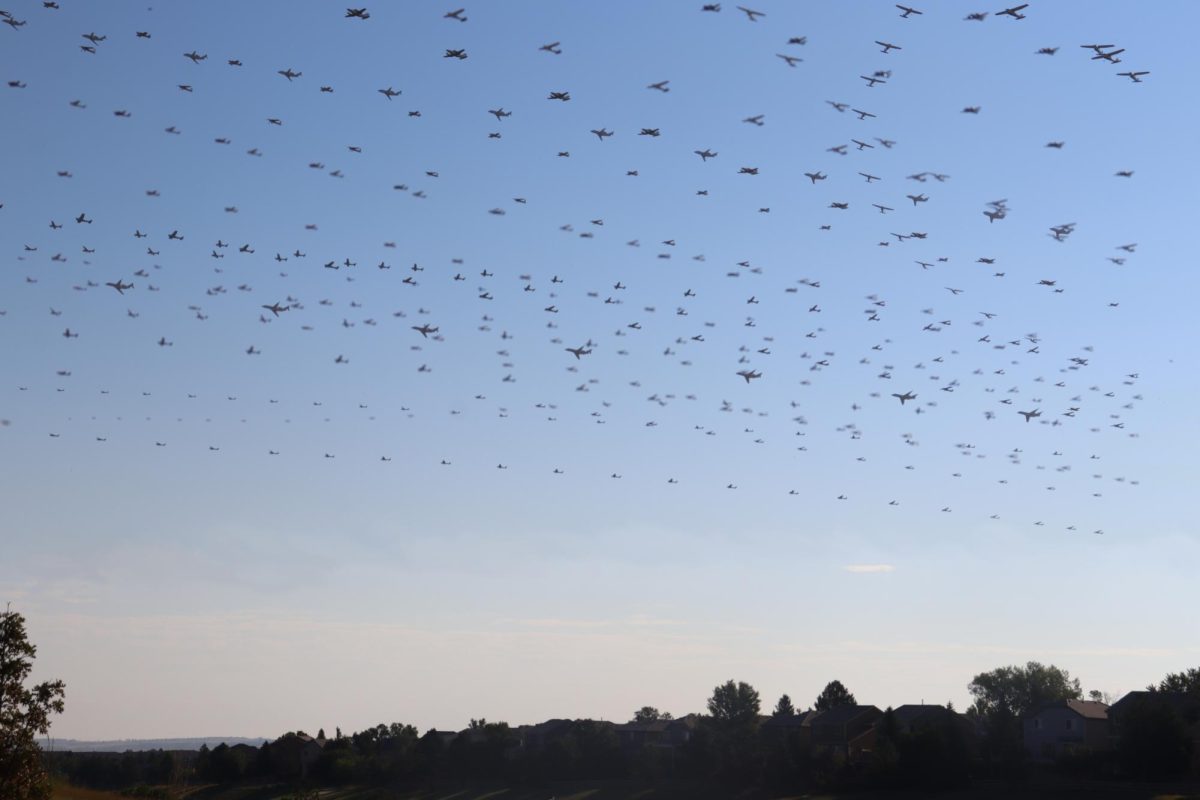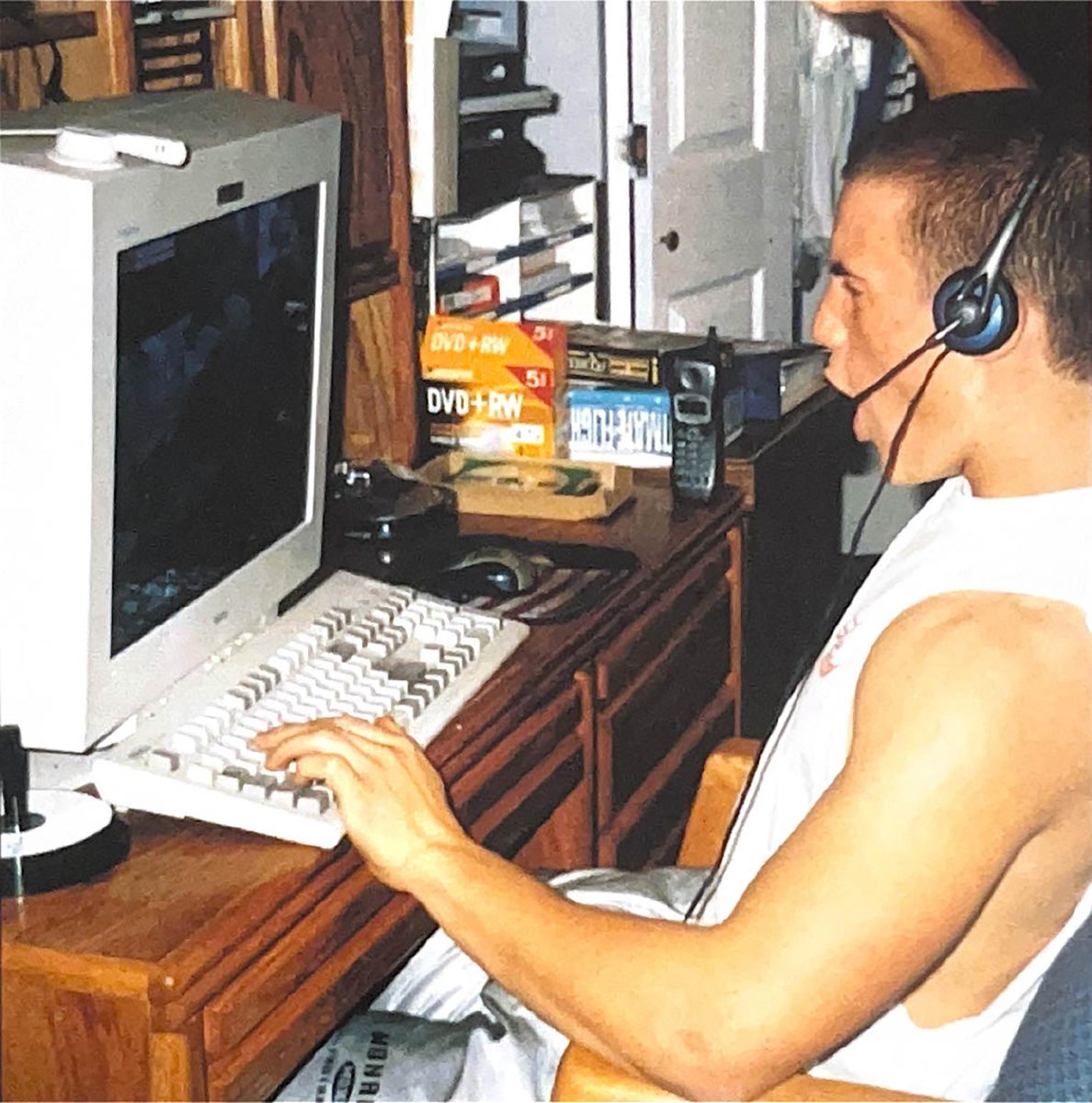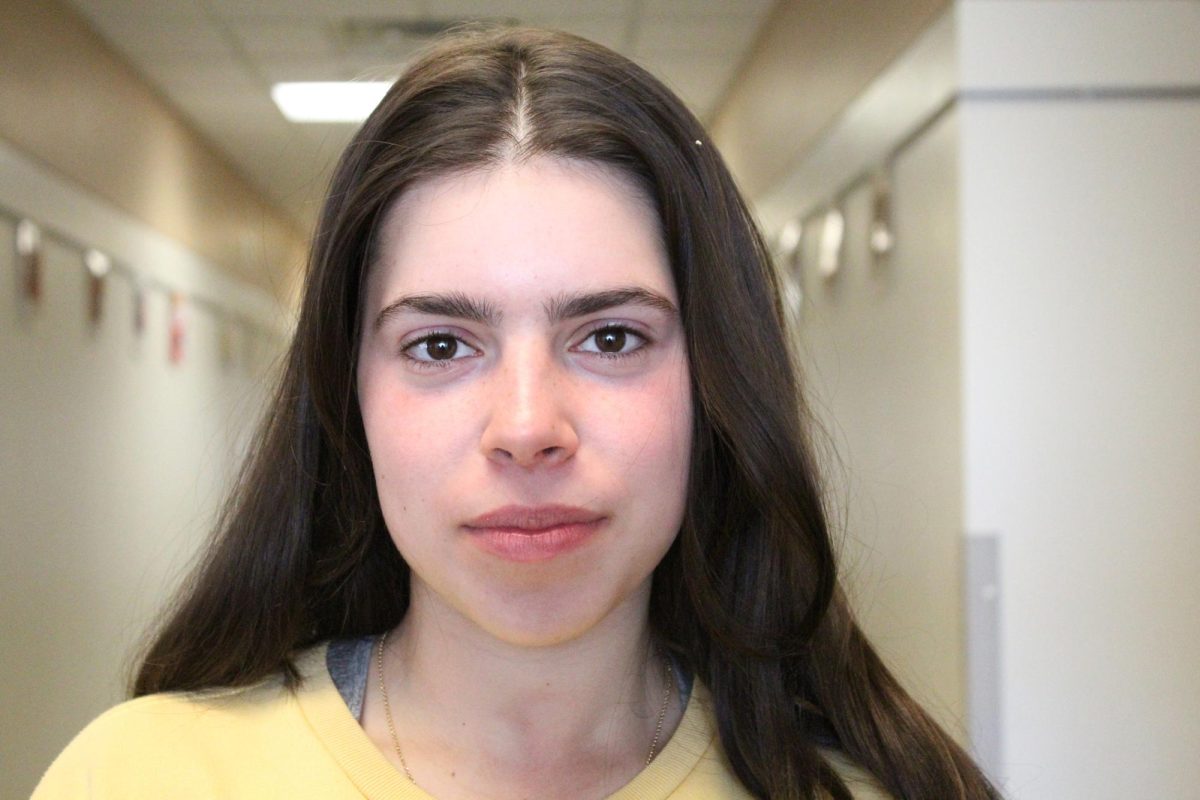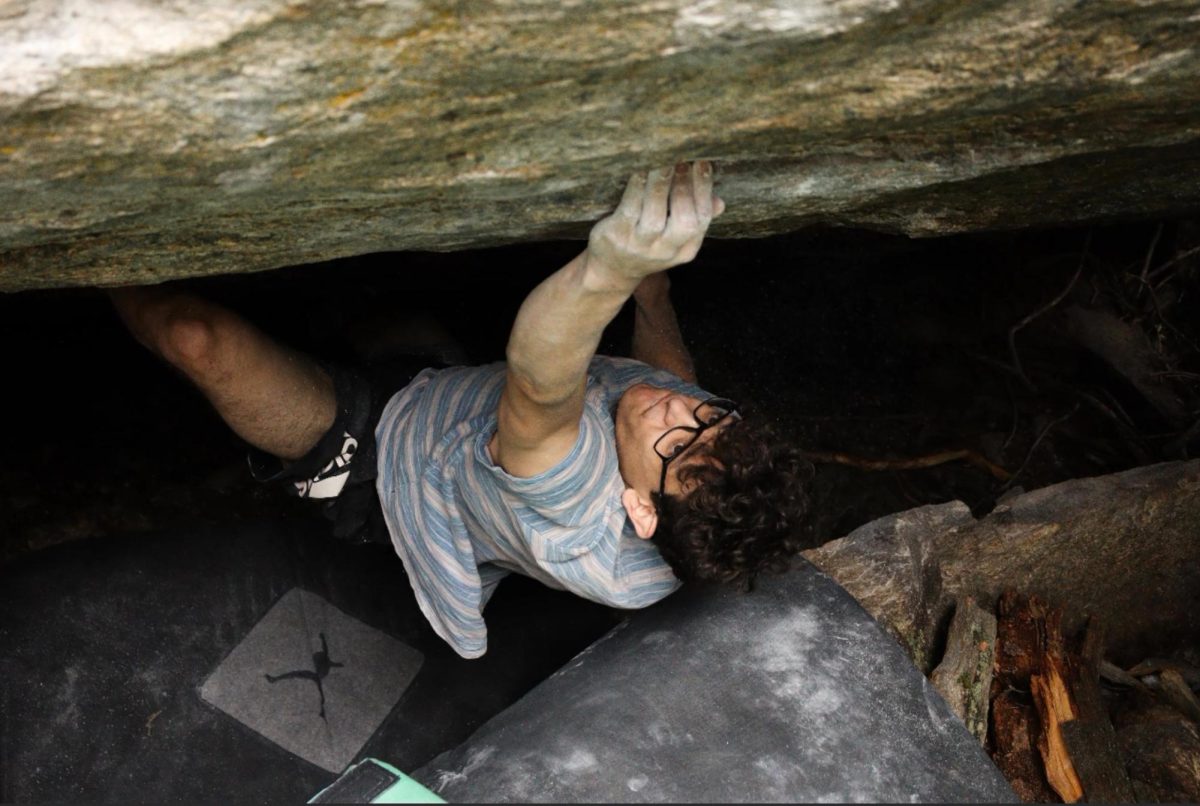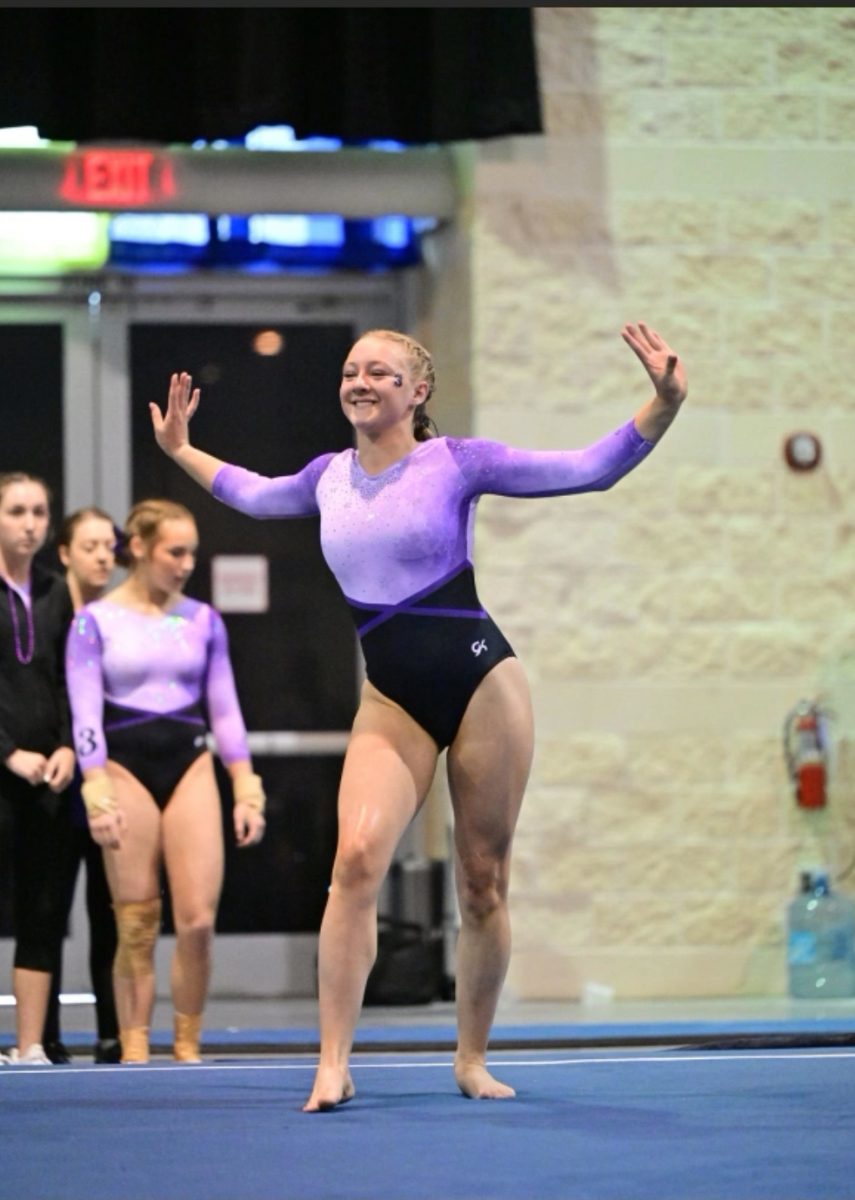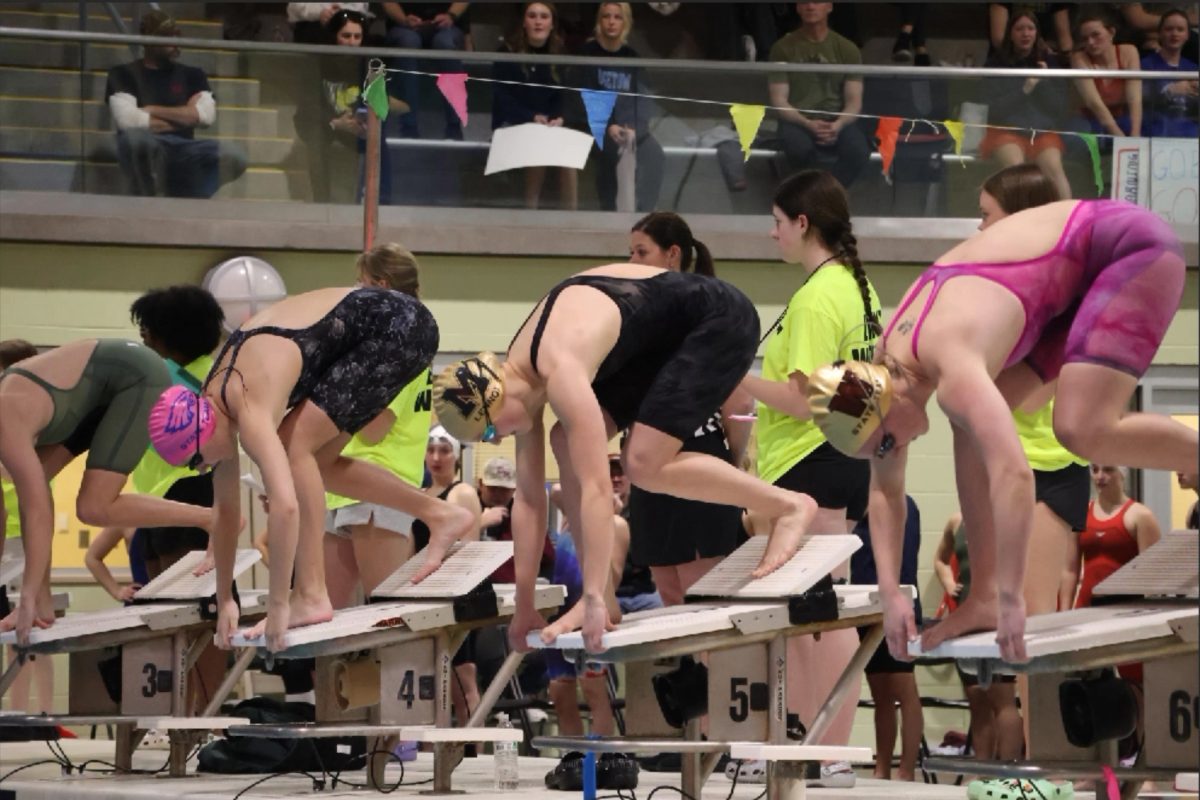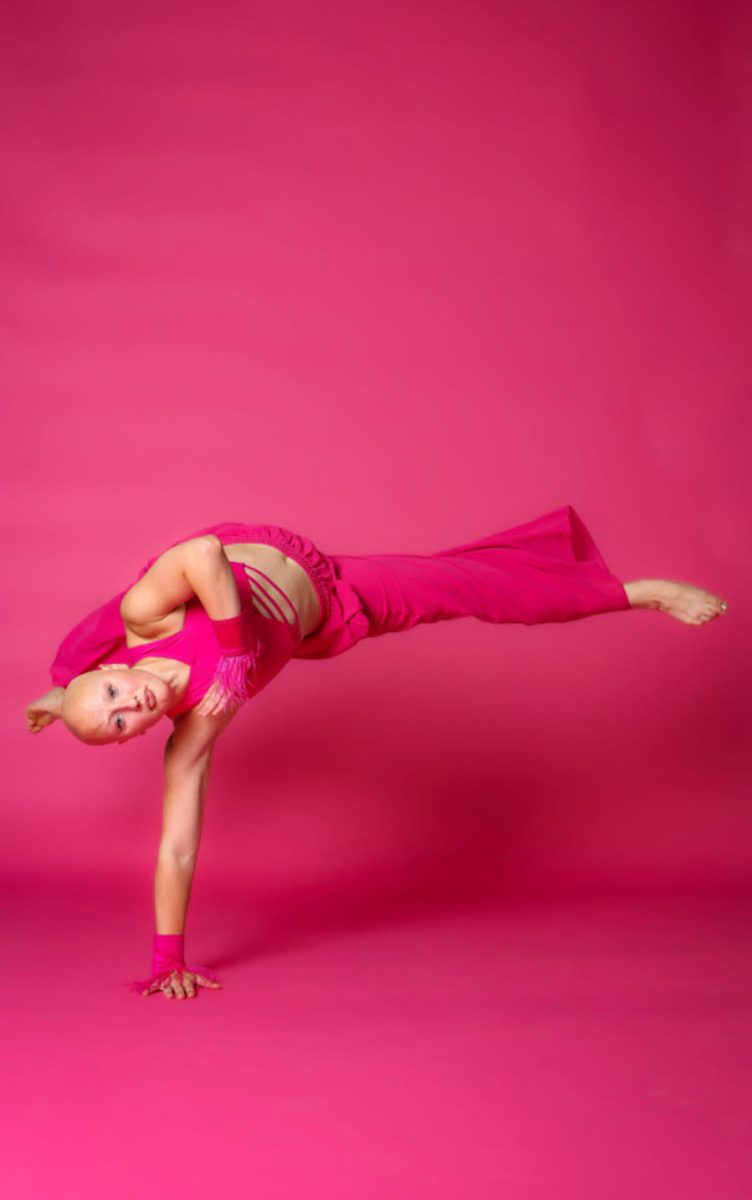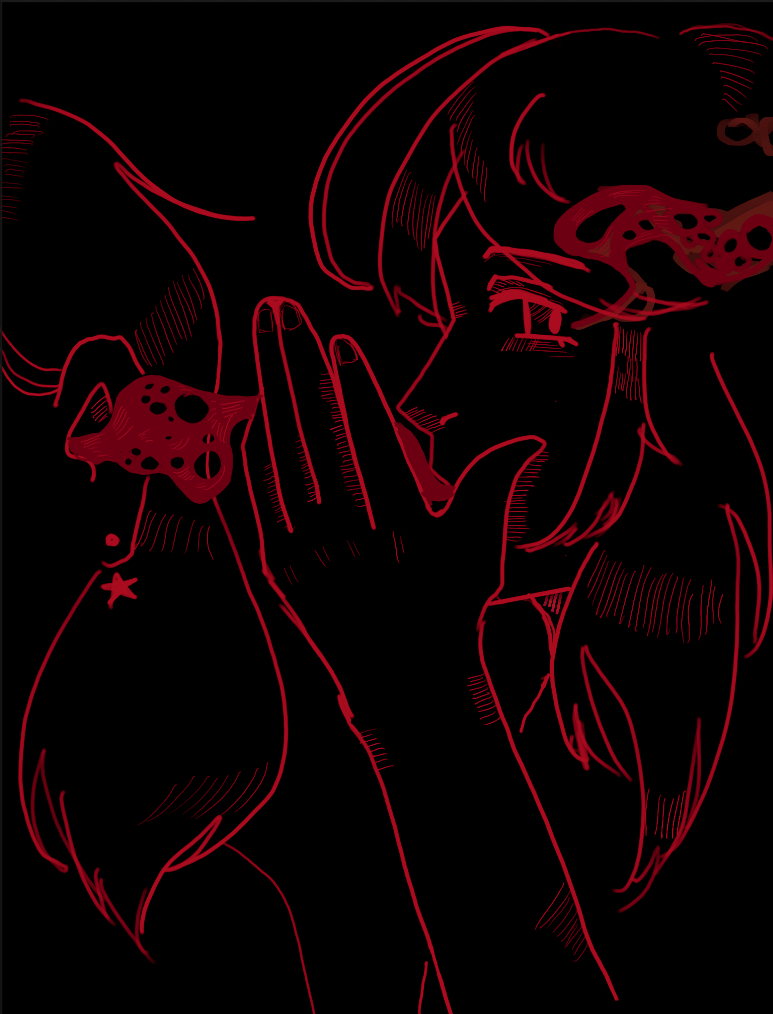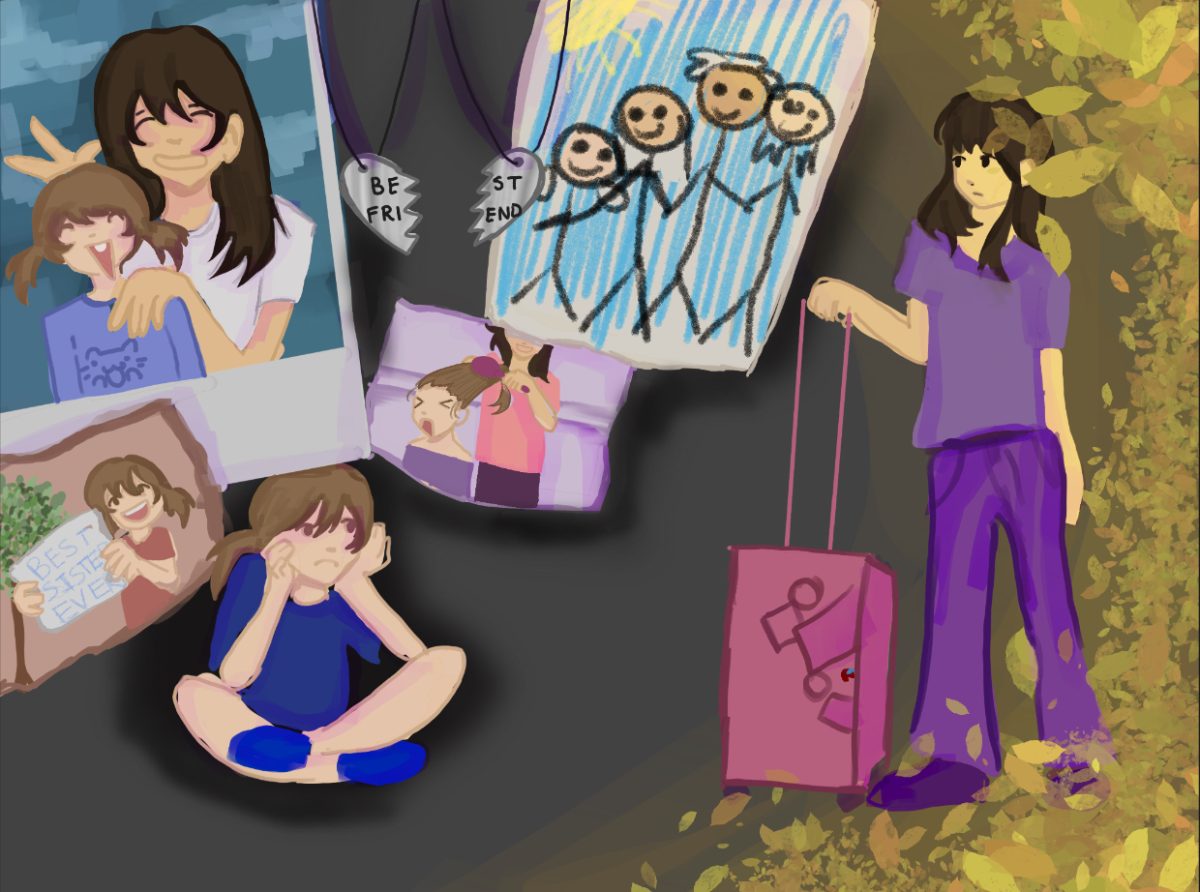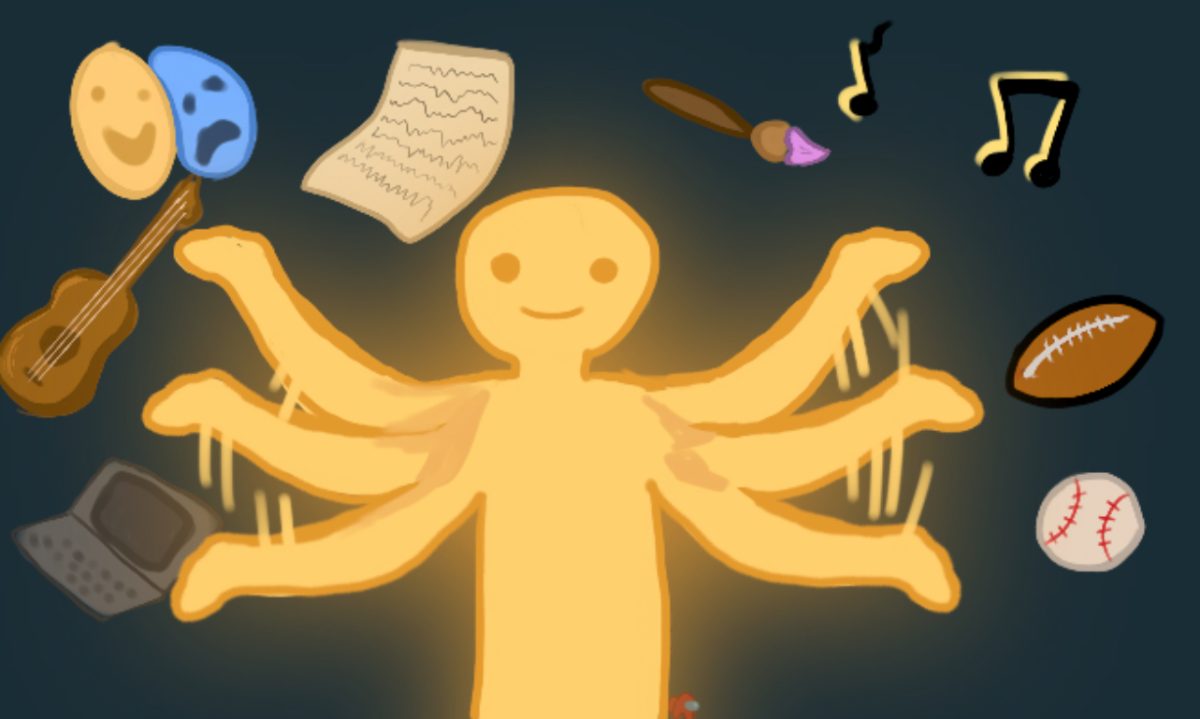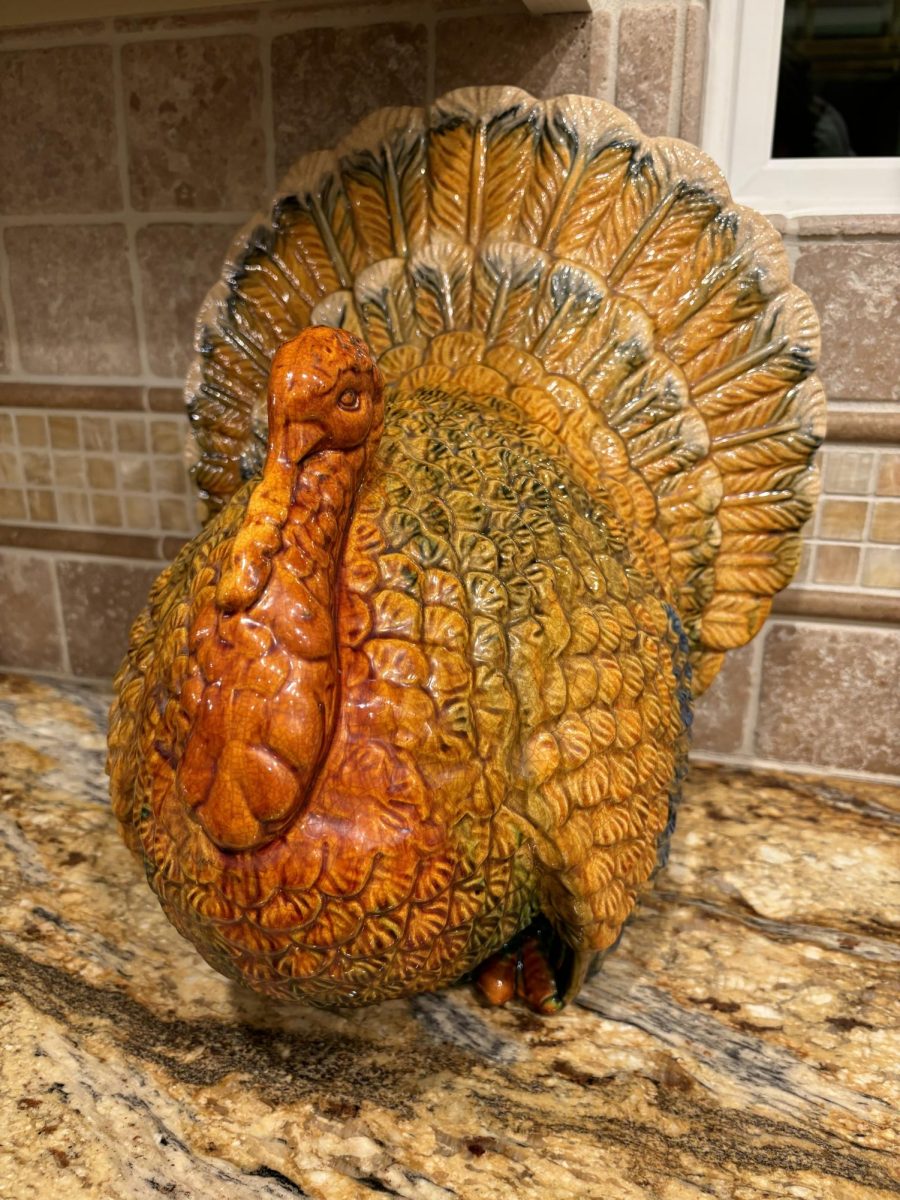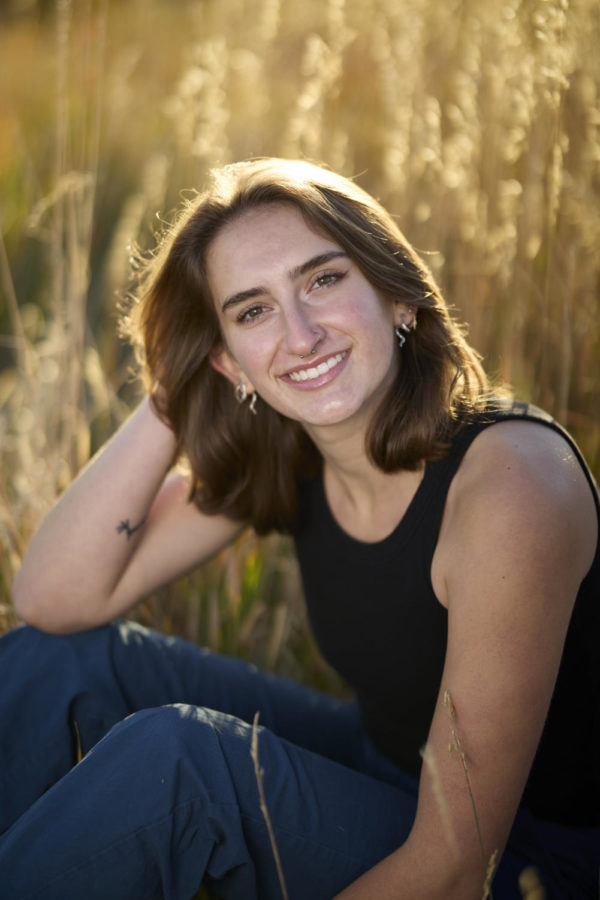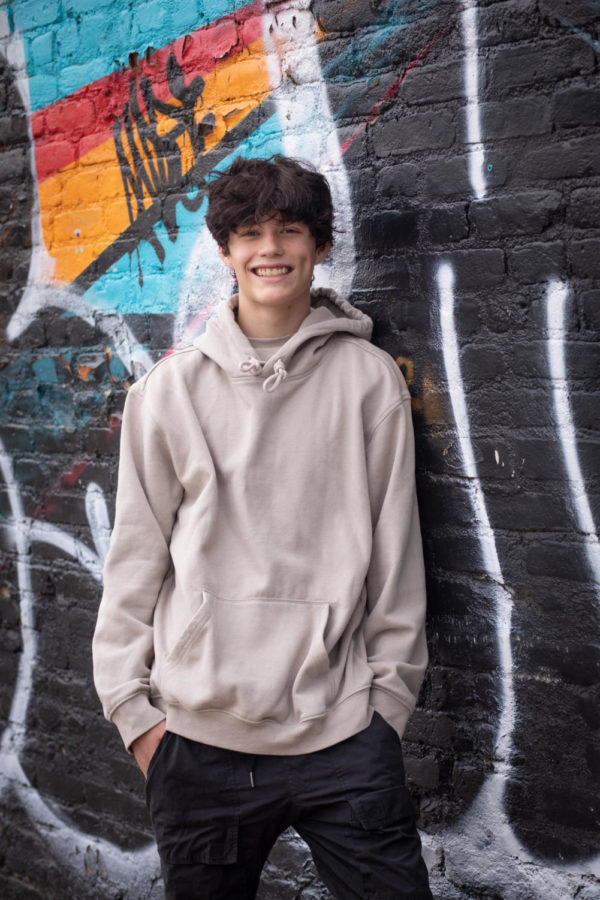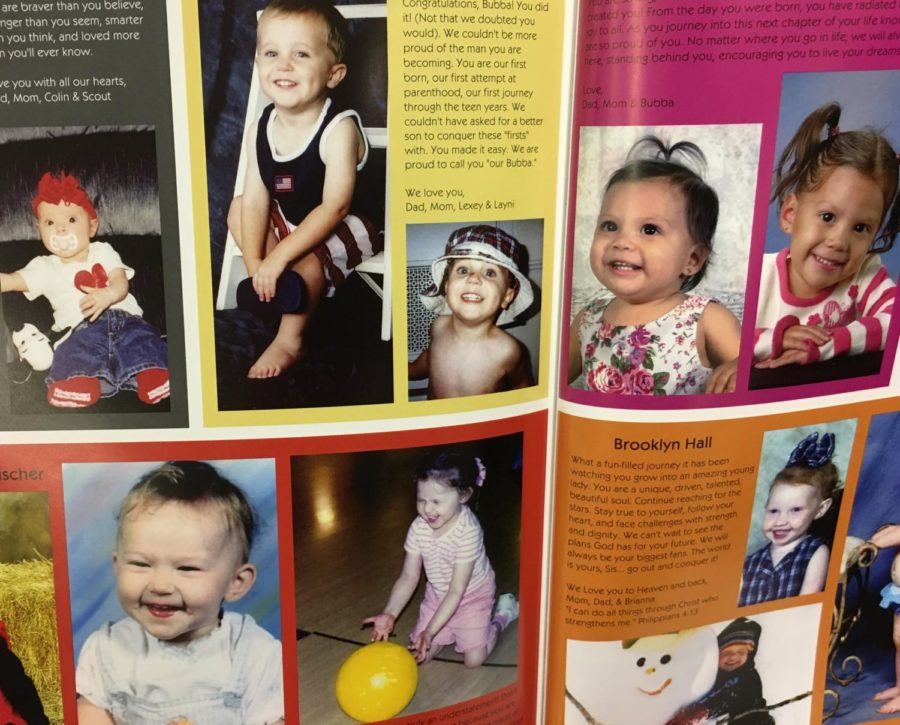Of sequins and surgeries
Gillian Beauchamp ’20 battles with hip dysplasia
She squirmed in her itchy dress as she looked up at the stage before her, floodlit from the sides and adorned with Christmas decor. Baubles and bells. Trees and tinsel. The lights dimmed and the world seemed to narrow in on the stage as the Tchaikovsky music began.
Beautiful ballerinas in tutus and jewels twirled across the stage as Clara, the Nutcracker, and the Sugar Plum Fairy whirled in circles. Gillian Beauchamp ‘20 soon forgot about the uncomfortable lace in her fancy dress. All she could do was picture herself as one of the dancers before her.
“I started dancing because of the Nutcracker,” Beauchamp said. “I can remember parts of the first time I saw it. I don’t remember the full story. But I remember seeing the dancers on stage and just thinking, ‘Wow I want to do that.’”
Ms. Lisa Beauchamp, Gillian’s mom, remembers her daughter perched on the edge of her lap, leaning over the seat in front of them, during the whole performance.
“We went just because she was a student there and I never thought it would shape her life, but it did,” Ms. Beauchamp said.
Soon after seeing the world’s most famous ballet, she became more serious about ballet. She has now performed in the Nutcracker every year since she was seven.
“I think it’s one of the shows that every company in the U.S. does,” Beauchamp said. “Which is why I think I love it. I dread it every single year. Like, those seven hour rehearsals on Saturdays? Kill me. But it’s so rewarding in the end that it’s worth it.”
She spent the next twelve years learning and perfecting the art of pointe ballet. Until the unthinkable happened.
One day at rehearsal, she heard a pop. Pain flared outwards like a spilled bottle of ink.
It’s fine, she thought. Push through it. This is normal for dancers. There are always aches and pains. But a few months later, Beauchamp was told it was not normal. And it wasn’t something she could push through. She had hip dysplasia.
The pain started freshman year. Two weeks before a show. Rehearsing the ballet “Firebird.”
Hip dysplasia is the medical term for a hip socket that doesn’t fully cover the ball portion of the upper thigh bone. Because of this, the hip joint can then become partially or completely dislocated.
“I sort of just danced through it for a while,” Beauchamp said. At first, “it felt like a tendonitis sort of pain… but by the time I got to surgery… it was starting to get painful to walk.”
The Nutcracker, ripped from her grasp, continued on without her.
In her junior year she was forced to sit on the sidelines, watching the rest of her studio perform in the show that has been her passion ever since she saw that first ballet as a tiny toddler.
“Last year I didn’t get to do the Nutcracker because of my surgeries,” Beauchamp said. “I helped out with giving directions. I was the rehearsal assistant, but not being able to dance with my friends was extremely hard. Knowing that they’re doing what they love and I can’t put me into this really bad mind state where I wanted to stop dancing.”
If Beauchamp had only suffered from hip dysplasia, her pain and treatment would have been minimal. But since she had continued to dance without treatment, she ended up with multiple labral tears in both hips.
“I had anywhere from five to seven tears in my left hip and three to four in my right,” Beauchamp said.
Labral tears are a result of a labrum injury, which is the soft tissue in the hip.
“It wasn’t like dance caused it, my genetics caused it, but dance made it worse,” she said.
Within the next year, Beauchamp had six hip surgeries.
“What they do is they break your pelvis,” Beauchamp said. “Well, they don’t break it they ‘cut it’. So they cut your pelvis and then they rotate it over your femur head and then they screw it back in place.”
“Before [the surgery], I was kind of freaked out,” Beauchamp said. “Hate needles, hate them… They put the IV in and I was sitting there and they gave me a bunch of pills to take before. I hate taking pills too. Perfect situation.”
So while other girls rehearsed their grand-jetes and pirouettes, Beauchamp was stuck in the hospital, folding paper cranes and waiting for her time offstage to be over.
“When you go through something like this for basically a year and a half,” Ms. Beauchamp said, “you can’t do all the things that you love, and it changes your identity.”
After the second and third surgery, the hospital walls became her home for a week. Due to her surgery in November of her junior year, Beauchamp was unable to return to school and her grades were frozen at Thanksgiving Break.
“I went from dancing thirty hours a week in August to five hours a week in May,” Beauchamp said. “It was just too painful to dance.”
In the summer before her senior year, Beauchamp began to ease herself into her old routine. But she still had to deal with the aftereffects of her surgeries. She had to take seven and eight year old classes to retrain.
“It was really frustrating,” Beauchamp said. There were a few times where I was like why did I even do this, why didn’t I just suck it up and dance through the pain?”
Beauchamp had to be careful not to make her pain from surgery worse. “She would start back at a lower level and then slowly work her way up,” Ms. Julia Manley, Beauchamp’s dance teacher, said.
However, after almost a year of hospital visits and six surgeries, Beauchamp was able to get back to dance.
“She realized through the process that the doctor could fix her hips, but she had to do all of the work to get back where she wants to be. Nobody is going to do that for her,” Ms. Beauchamp said.
But Beauchamp wasn’t able to pick back up where she left off. It was a struggle.
“The first few times were frustrating, my teacher was always like ‘light face, be happy that you’re back.’ But I was like, ‘it’s hard, I can’t do anything.’ But I think, too, I was just grateful for the opportunity to dance again,” Beauchamp said.
By December of 2019, however, Beauchamp was no longer held back by her surgeries. Beauchamp was finally able to be in the Nutcracker again. And this time, in her dream role.
“I got to be my dream role, which is Snow Queen. It was so magical, especially after everything that happened with my surgeries.”
She danced her heart out. Twirling in sequins and sparkles again.
“She was in a warmup class before the Nutcracker where she was Snow Queen and all of a sudden I remembered this whole journey. Sometimes you are just so in the moment you forget all of the ups and downs that you’ve been through,” Ms. Manley said. “They all came flooding back to me, and we both just spontaneously started sobbing.”
After such a long and exhausting journey, Gillian was finally back to her happy place.
“I didn’t know if I would be able to perform after that. So just doing my dream role after such a hard year, it was just so exciting and celebratory. I would say that was my favorite performance,” Beauchamp said.


